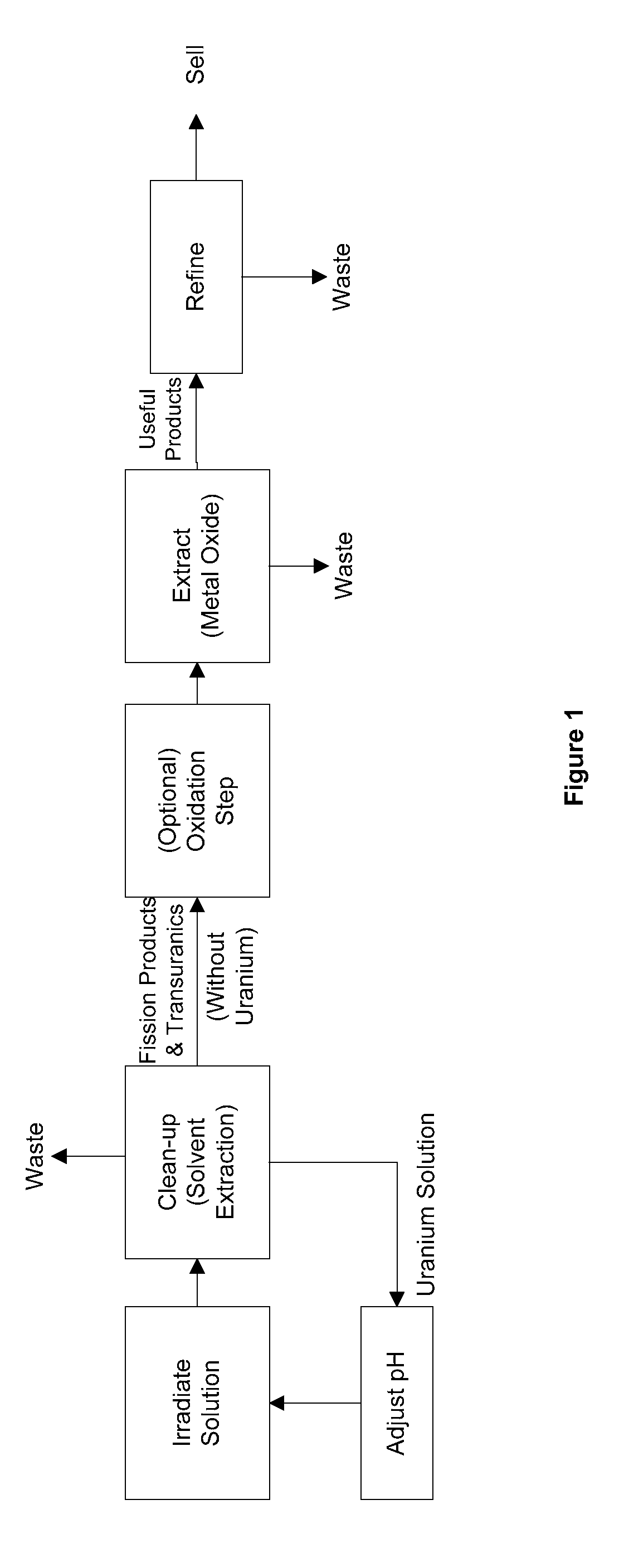Methods of separating medical isotopes from uranium solutions
- Summary
- Abstract
- Description
- Claims
- Application Information
AI Technical Summary
Problems solved by technology
Method used
Image
Examples
Embodiment Construction
[0014]In a general sense, the disclosure relates to methods and compositions for separating medical isotopes from a uranium solution. Medical isotopes may be generated in uranium solutions in, for example, aqueous nuclear reactor systems. An aqueous nuclear reactor or aqueous uranium target driven by an accelerator reduces some of the inefficiencies of solid target systems. In an aqueous system, uranium is dissolved into a liquid form (typically a nitrate or sulfate form) and irradiated to produce the desired isotopes. In certain embodiments, the uranium solution may suitably include at least one of uranyl nitrate, uranyl sulfate, uranyl fluoride, and uranyl phosphate, or a combination thereof. The incident radiation is either produced internally (in the case of a critical reactor) or externally (in the case of an accelerator-driven system). Fission occurs in the liquid as the irradiation proceeds and typically ceases after several days.
[0015]Either during or after the irradiation i...
PUM
| Property | Measurement | Unit |
|---|---|---|
| Density | aaaaa | aaaaa |
| Solution | aaaaa | aaaaa |
Abstract
Description
Claims
Application Information
 Login to View More
Login to View More - R&D
- Intellectual Property
- Life Sciences
- Materials
- Tech Scout
- Unparalleled Data Quality
- Higher Quality Content
- 60% Fewer Hallucinations
Browse by: Latest US Patents, China's latest patents, Technical Efficacy Thesaurus, Application Domain, Technology Topic, Popular Technical Reports.
© 2025 PatSnap. All rights reserved.Legal|Privacy policy|Modern Slavery Act Transparency Statement|Sitemap|About US| Contact US: help@patsnap.com



